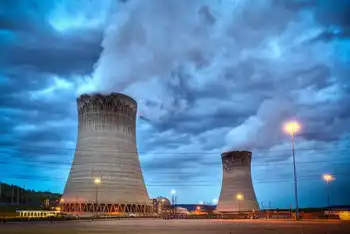Hydrogen touted as future of UK power
GREAT BRITAIN - Britain could find itself in the dark by the end of the decade.
This is the stark reality facing the energy sector and the country, according to Dr Graham Cooley, the chief executive of one of the few enterprise in Britain that is trying to commercialize clean hydrogen fuel. His imagery becomes gruesome: If Britain's energy situation were "like a Disney movie, we are at the point where Bambi's mother is dead".
Dr Cooley is not some lone doomsayer. The Energy minister, Charles Hendry, warned last week that the sector needed £200 billion of investment to avoid future problems. His boss Chris Huhne, the Secretary of State for Energy and Climate Change, not only wants energy security but also a "low-carbon energy future". He has said that 31 per cent of Britain's energy use, including for heat and transport, must come from renewable sources by 2020 – a target he estimates could provide £100bn of investment opportunities and up to half a million jobs.
A fraction – 60 – of these "green collar" jobs can already be found at the Sheffield manufacturing hub of Dr Cooley's company, ITM Power, which is listed on the Alternative Investment Market. The facility is filled by youngish scientists, average age 35, and beakers where electricity converts water into hydrogen and oxygen. The hydrogen is then compressed and stored for later use – fuelling cars, heating and lighting homes, or powering industry.
The electrolysis equipment is patented and, Dr Cooley believes, could help to regulate power supply, helping to prevent blackouts. To demonstrate his point, he has a mock-up flat with a kettle, oven and microwave running on hydrogen at the factory.
Dr Cooley says the ability to harness as well as store renewable energy is one of the most critical challenges facing Britain and one where the use of hydrogen could be effective. But as ITM prepares for its first large-scale trial of its technology in commercial vehicles next year, and forges links with the rapidly expanding hydrogen economies worldwide, it is furrowing a lonely path in Britain.
"The US and German governments have made a commitment to hydrogen. But in UK government policies there is no mention of the use of hydrogen," he says. "It is a huge and serious oversight."
An oversight Dr Cooley hopes the Government may readdress once it sees the results of ITM's cross-country "Hydrogen on Site Trials" next year. As part of the trials, ITM has signed up global logistics company DHL Supply Chain, the Forestry Commission, Stansted Airport, Sheffield Council and the London borough of Camden as partners. ITM will provide the parties with hydrogen-fuelled Ford Transit vehicles for a week each. These will be refuelled from a transportable high-pressure refuelling unit. After the tests, the parties involved can continue to lease the vehicles if they wish.
Dr Cooley says convincing companies with large commercial fleets to try its technology is not difficult as the trend for hydrogen cars is well under way. "There was a significant event last year that was not made a lot of in the UK, but major car manufacturers signed a memorandum of understanding that they would increase the production of hydrogen cars by 2015."
The companies in question, Daimler, Kia and GM, agreed to produce 10,000 hydrogen cars by 2015. By 2020, along with Hyundai, they aim to produce 100,000 cars each. The German government has said it would invest $2 billion in building 1,000 hydrogen refuelling stations. Normal cars can be adapted to hydrogen use fairly easily, can run for longer than electric cars and can be refuelled in two minutes.
In Britain, the Government is still pushing ahead with its plans for an electric car network. "Now every car company in the world is coming out with hydrogen cars," says Dr Cooley. "But what has the UK done? We did the classic British thing. We picked the wrong technology."
In the US, there are already plans for "home refuellers" where car drivers can fill up their hydrogen cars at home. ITM Power secured a contract last year to design a home refuelling prototype for NextEnergy, a U.S. organization working with American car manufacturers.
Having a large global market for its Hfuel refuelling products will be good news for ITM, but Dr Cooley says that hydrogen's potential for energy storage could have even greater commercial applications.
Demand for electricity in Britain is repetitive and predictable, with peak usage between 6 a.m. and 1 a.m. and usage in winter is higher than in summer. Ensuring the most cost-effective energy system requires a steady supply, preventing, where possible, power surges.
Wind farms, for example, which have seen billions in government investment, provide intermittent and unpredictable energy which, if not submitted to the national grid or stored, is lost for ever. Finding a way to store energy could make more efficient use of wind farms.
The UK needs large-scale investment in a centralised energy-storage system, says Dr Cooley, but this is not taking place. And the lack of this investment is driving the growing concern about future energy supply.
However, he says, there are other alternatives. "Just as it was for Bambi, there is a way out at the end." ITM is working on other products which allow "micro-level" storage.
It is producing a series of electrolyzers for the home – called Hbox – and for small industrial sites – called Hpac. These allow consumers to create and store their own energy, reducing their reliance on the national grid and improving the grid's overall performance. "Energy storage at the home and local level can be done more cheaply than on a national level," he says. "If you deal with little energy peaks locally at the home it will even the system out, particularly as industry uses a steadier supply of energy."
Such technology has to be created in the absence of clear central government investment and policy. Earlier this month, the Confederation of British Industry said in a report – No Time to Lose: Deciding Britain's Energy Future – that without a clear government policy, £150 billion of private-sector investment in low-carbon infrastructure would fail to materialize.
For individual companies such as ITM, this could be critical. ITM currently has a further 3.5 years of funding and is pinning its future performance on product sales and further technology innovation grants.
While Dr Cooley expects huge market interest in ITM's "compelling proposition" and a profitable future as the company moves into the revenue stage of development, he warns: "It will be just typical if we get there with the technology but run out of money and then the Government decides it wants hydrogen power. Someone will say, 'Wasn't there a company in Sheffield that could do that? Oh yes, but it's not there any more so we'll have to import it from Germany.'"
Related News

Clean, affordable electricity should be an issue in the Ontario election
TORONTO - Ontario electricity demand is forecast to soon outstrip supply, a problem that needs attention in the upcoming provincial election.
Forecasters say Ontario will need to double its power supply by 2050 as industries ramp up demand for low-emission power and consumers switch to electric vehicles and space heating. But while the Ford government has made a flurry of recent energy announcements, including a hydrogen project at Niagara Falls and an interprovincial agreement on small nuclear reactors, it has not laid out how it intends to bulk up the province’s power supply.
“Ontario is entering a period of widening electricity shortfalls,”…




